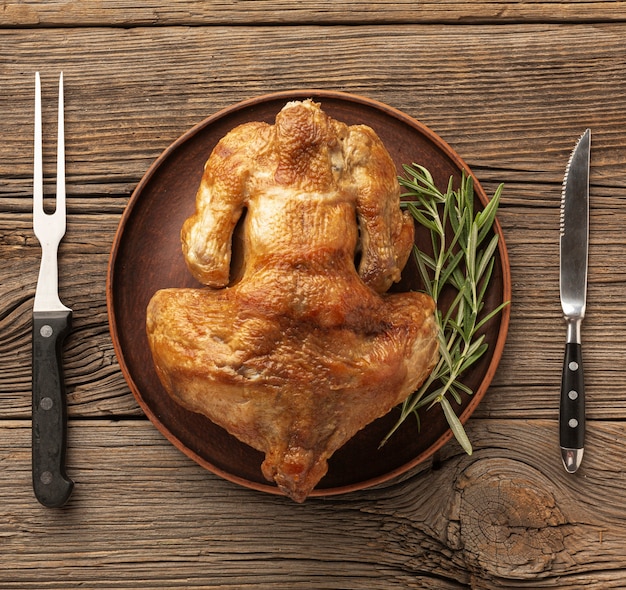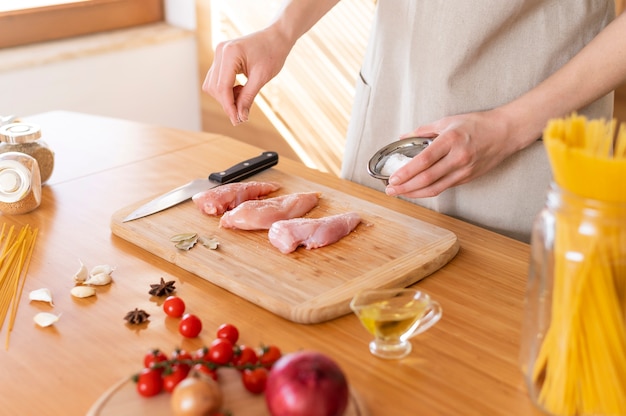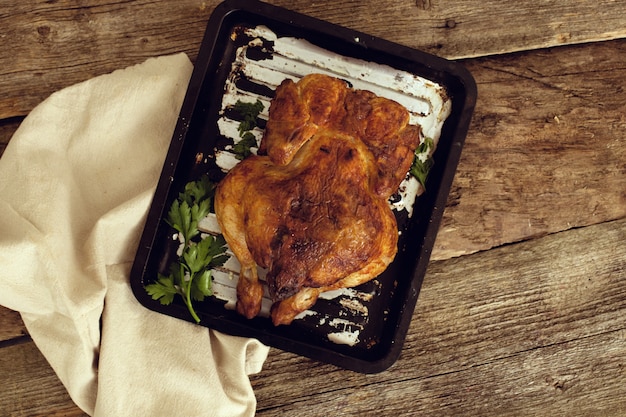Ah, the humble turkey breast. A culinary classic, a festive centerpiece, a delicious source of protein. But how long do you cook that magnificent 7 lb breast to perfection? It's a question that haunts many a home cook, especially when the pressure is on for a celebratory feast. I’ve been there myself, staring at the oven timer, fretting over the internal temperature, and wondering if I’ll end up with a dry, disappointing bird.
Don’t worry – I’ve spent countless hours experimenting in the kitchen, and I’m here to share my secrets. You’ll learn about the key factors that influence cooking time, discover handy tips to ensure a juicy and flavorful breast, and gain confidence in tackling that 7 lb challenge. Let’s dive into the world of turkey breast cooking, one juicy slice at a time!
(Part 1) Understanding the Basics of Turkey Breast Cooking

The Size of the Beast
A 7 lb turkey breast is no small feat. It’s a substantial chunk of meat that needs ample time in the oven to cook through evenly. The size of your breast plays a huge role in determining the cooking time. It’s tempting to think you can just pop it in the oven and forget about it, but I’ve learned the hard way that haste makes waste. The bigger the breast, the longer it needs to cook, so be patient and let it simmer to perfection.
Oven Temperature: The Foundation of Success
The oven is the heart of this operation, and its temperature is critical. For a 7 lb breast, you’re aiming for a steady 325°F (163°C). It’s a sweet spot that allows the breast to cook through gently without drying out.
Now, every oven has its own quirks. I’ve had the misfortune of encountering ovens that run hot or cold, so it’s always a good idea to calibrate your oven with an oven thermometer. This helps ensure that you’re cooking at the correct temperature.
Roast or Stuff It? A Decision to Make
Do you envision a simple roast or a stuffed masterpiece? This is a choice that will impact the cooking time. Stuffing a turkey breast adds an extra layer of complexity, as you need to ensure the filling cooks through as well. It’s like having a little oven inside your turkey! Expect to add extra time to the cooking process if you choose the stuffing route.
(Part 2) Calculating Cooking Time: A Journey of Patience

The General Rule of Thumb
So, how long should you cook that 7 lb turkey breast? The general rule of thumb is around 3 to 4 hours. But here’s the thing: this is just a guideline. A lot of factors can influence the actual cooking time, so it’s crucial to have backup plans and a watchful eye on the process.
The meat thermometer: Your Trusted Ally
Forget relying solely on the oven timer! A meat thermometer is your ultimate ally in this quest for turkey breast perfection. It’s the only way to be truly sure that the breast is cooked through to a safe internal temperature of 165°F (74°C).
I’ve learned over the years that inserting the thermometer into the thickest part of the breast, avoiding any bones, gives the most accurate reading. This ensures you’re measuring the temperature of the meat itself, not just the surrounding air.
Don't Neglect Those Legs!
While you’re focused on the breast, don’t forget about those legs! The thickest part of the leg should also reach 165°F (74°C). These are the parts that take the longest to cook through, so it’s important to check them as well.
Rest Time: A Culinary Pause
Once your turkey breast is cooked through, don’t rush to carve it. Give it a good 15-minute rest. This allows the juices to redistribute throughout the meat, resulting in a more succulent and flavorful breast. Think of it as a culinary pause that rewards you with extra deliciousness!
(Part 3) Uncovering the Factors That Affect Cooking Time

Bone-in vs. Boneless: The Anatomy of a Turkey Breast
A bone-in turkey breast will take a little longer to cook than a boneless one. The bone helps retain moisture and adds a unique flavor, but it also creates a barrier that slows down heat penetration. Be prepared for a slightly longer cook time if you're working with a bone-in beast.
Stuffing: A Culinary Time Capsule
Stuffing a turkey breast adds a whole new dimension to the cooking time. It’s like adding a tiny oven inside your turkey! Not only does it need to be cooked through, but it also insulates the breast, making it take longer to reach the desired internal temperature. If you're going the stuffing route, be prepared to extend your cook time considerably.
The Oven's Personality: Every Oven Has Its Own Story
It sounds a bit whimsical, but ovens have personalities, and their temperature output can vary significantly. I’ve experienced the frustration of an oven running hot, which can lead to a burnt crust and an undercooked interior. On the other hand, a cooler oven might need a bit more time to cook the breast through. It's always a good idea to use an oven thermometer to make sure your oven is performing as expected.
The Type of Turkey Breast: Quality Matters
The quality of your turkey breast will definitely impact the cooking time. A fresh breast, brimming with juicy goodness, might take a little longer than a frozen one. And, of course, the quality of the meat will influence the final flavor and texture of your dish.
Don't Underestimate the Power of the Weather
You might be surprised, but weather can actually play a role in turkey breast cooking. On a chilly day, your oven might take a bit longer to heat up, which means your breast will need additional cooking time. It’s a reminder that even the most precise recipes are influenced by external factors.
(Part 4) Troubleshooting Turkey Breast Cooking: Solutions for Every Challenge
The Bird is Done, But It's Not Cooked Through?
This is a scenario that can send chills down a home cook's spine. The turkey breast looks done on the outside, but the internal temperature just isn't hitting that magic 165°F (74°C) mark. Don’t despair! Give it a bit more time in the oven. Make sure the temperature is evenly distributed, and the breast is cooking through to the core.
The Breast is Dry? Reviving a Dry Turkey Breast
Nobody wants a dry, disappointing turkey breast. If yours is a bit on the dry side, you can try adding a little bit of broth or water to the bottom of the roasting pan. The steam will help to rehydrate the breast, restoring its juicy goodness.
The Skin is Burning? Saving a Crispy Crust
If the skin is turning into a burnt, crispy mess, don’t panic! Cover the breast with foil for the last part of the cooking time. This helps to prevent further browning while still allowing the breast to cook through. It’s a simple trick that saves the day.
(Part 5) Tips for a Juicy and delicious turkey Breast: Mastering the Art of Flavor
Brine Your Bird: A Recipe for Juiciness
Brining is a culinary magic trick that transforms a turkey breast into a symphony of flavor. It involves soaking the breast in a salt-water solution, which helps to retain moisture and enhance the overall taste. You can stick with a basic salt-water brine, or get fancy with herbs and spices. I've even tried adding a bit of citrus for a tangy twist.
Don’t Overcook It: The Key to Tenderness
The secret to a juicy turkey breast lies in avoiding overcooking. Once the internal temperature hits 165°F (74°C), it’s time to take it out of the oven. Resist the urge to cook it any longer, as it can result in a dry and tough breast.
Rest, Rest, Rest: A Culinary Symphony of Flavor
Give the turkey breast a good 15-minute rest before carving. This allows the juices to redistribute throughout the meat, resulting in a more succulent and flavorful breast. It's a simple step that makes a world of difference.
Don’t Be Afraid to Add Some Fat: A Delicious Secret
Adding a little bit of fat to the roasting pan can help to keep the turkey breast moist and flavorful. You can use butter, oil, or even pancetta. The fat bastes the breast as it cooks, adding a beautiful golden hue and enhancing the overall richness.
(Part 6) Turkey Breast Cooking Time Chart: A Guide to Different Sizes
Here's a table to provide a general idea of the cooking time for different sized turkey breasts:
| Size (lb) | Cooking Time (hours) |
|---|---|
| 4-5 | 2-3 |
| 6-7 | 3-4 |
| 8-9 | 4-5 |
Remember, this is just a general guide. It’s always best to use a meat thermometer to check the internal temperature to ensure the breast is cooked through.
(Part 7) turkey breast recipes: A culinary adventure
Here are a few recipes that I’ve enjoyed experimenting with over the years, each one showcasing the versatility of the turkey breast:
- roasted turkey breast with Herbs and Garlic: This is a classic recipe that’s simple to make and always a crowd-pleaser. The combination of herbs and garlic creates a symphony of savory aromas, while the roasting process brings out the natural sweetness of the turkey.
- Lemon-Herb Roasted Turkey Breast: If you're looking for a bit more flavor, this recipe is a great option. The tangy zest of lemon adds a bright, refreshing element, while the aromatic herbs provide a warm and comforting touch.
- Spiced Cranberry-Glazed Turkey Breast: This recipe is perfect for the holiday season, with its sweet and tangy cranberry glaze. The spice adds a touch of warmth and complexity, while the cranberry glaze creates a beautiful glossy finish.
- Turkey Breast with Apricots and Almonds: This recipe is a bit more exotic, with its combination of sweet apricots and nutty almonds. It's a delightful fusion of flavors that’s both elegant and satisfying.
- stuffed turkey Breast with Sausage and Apples: This recipe is a real treat, with its savory sausage and sweet apples. The stuffing is a labor of love, but the result is well worth the effort.
(Part 8) FAQs: Answering Your Burning Questions
How long should I cook a 7 lb turkey breast at 350°F?
Cooking a 7 lb turkey breast at 350°F will result in a slightly faster cook time, but you still need to ensure it reaches a safe internal temperature of 165°F (74°C). I recommend using a meat thermometer to check the internal temperature throughout the cooking process.
Can I cook a turkey breast at a lower temperature?
You certainly can! cooking a turkey breast at a lower temperature, like 325°F (163°C), can help to prevent the breast from drying out. Just remember that it will take a bit longer to cook through.
What happens if I overcook my turkey breast?
Overcooking a turkey breast can lead to dryness and a tough texture. It’s essential to use a meat thermometer and ensure it reaches the proper internal temperature.
How do I know if my turkey breast is done?
The best way to determine if your turkey breast is done is to use a meat thermometer and check the internal temperature. It should reach 165°F (74°C) in the thickest part of the breast.
Can I cook a turkey breast in a slow cooker?
You can! It’s a great option for a more hands-off approach. Just make sure you have a slow cooker that is large enough to accommodate the breast. The cooking time will vary depending on the slow cooker setting and the size of the breast, but generally, you can expect to cook a 7 lb breast on low for 6-8 hours.
I hope this comprehensive guide has given you the confidence and knowledge to tackle that 7 lb turkey breast with gusto. Remember, it's all about taking your time, using a meat thermometer, and ensuring that the bird is cooked to the perfect temperature. Happy turkey cooking!
Everyone is watching

How to Cook Frozen Lobster Tails Perfectly: A Step-by-Step Guide
RecipesLobster. Just the word conjures up images of lavish meals, special occasions, and a taste of luxury. But let's...

Pigs in a Blanket Cooking Time: How Long to Bake for Perfect Results
RecipesAh, pigs in a blanket. Just the name conjures up images of those delightful little parcels of crispy pastry en...

Pork Fillet Cooking Time: How Long to Cook It Perfectly
RecipesPork fillet, or tenderloin as it's sometimes called, is a real favourite in our house. It's so versatile, and...

The Ultimate Guide to Tender, Juicy Pulled Pork
RecipesRight, let's talk pulled pork. It's one of those dishes that just screams "comfort food," doesn't it? I mean...

The Ultimate Guide to Cooking Sweet Potatoes: From Roasting to Mashing
RecipesSweet potatoes. Just the name conjures up images of warm, comforting dishes, bursts of vibrant color, and a to...
